
Rococco - III
François Boucher
1703 – 1770
François Boucher (29 September 1703 – 30 May 1770) was a French painter, draughtsman and etcher, who worked in the Rococo style. Boucher is known for his idyllic and voluptuous paintings on classical themes, decorative allegories, and pastoral scenes. He was perhaps the most celebrated painter and decorative artist of the 18th century.
A native of Paris, Boucher was the son of a lesser known painter Nicolas Boucher, who gave him his first artistic training. At the age of seventeen, a painting by Boucher was admired by the painter François Lemoyne. Lemoyne later appointed Boucher as his apprentice, but after only three months, he went to work for the engraver Jean-François Cars.
In 1720, he won the elite Grand Prix de Rome for painting, but did not take up the consequential opportunity to study in Italy until five years later, due to financial problems at the Académie royale de peinture et de sculpture. On his return from studying in Italy he was admitted to the refounded Académie de peinture et de sculpture on 24 November 1731. His morceau de réception (reception piece) was his Rinaldo and Armida of 1734.
Boucher married Marie-Jeanne Buzeau in 1733. The couple had three children together. Boucher became a faculty member in 1734 and his career accelerated from this point as he was promoted Professor then Rector of the academy, becoming inspector at the Royal Gobelins Manufactory and finally Premier Peintre du Roi (First Painter of the King) in 1765.
Boucher died on 30 May 1770 in his native Paris.

Portrait of François Boucher by Gustaf Lundberg (1741)

The Afternoon Meal
1739

Allegory of Painting
1765

Allegory of Music
1764

Rinaldo and Armida
1734

Brown Odalisque (L'Odalisque Brune)
1745

The Birth of Venus
1740

The Education of Cupid
1742

Diana Resting after her Bath
1742
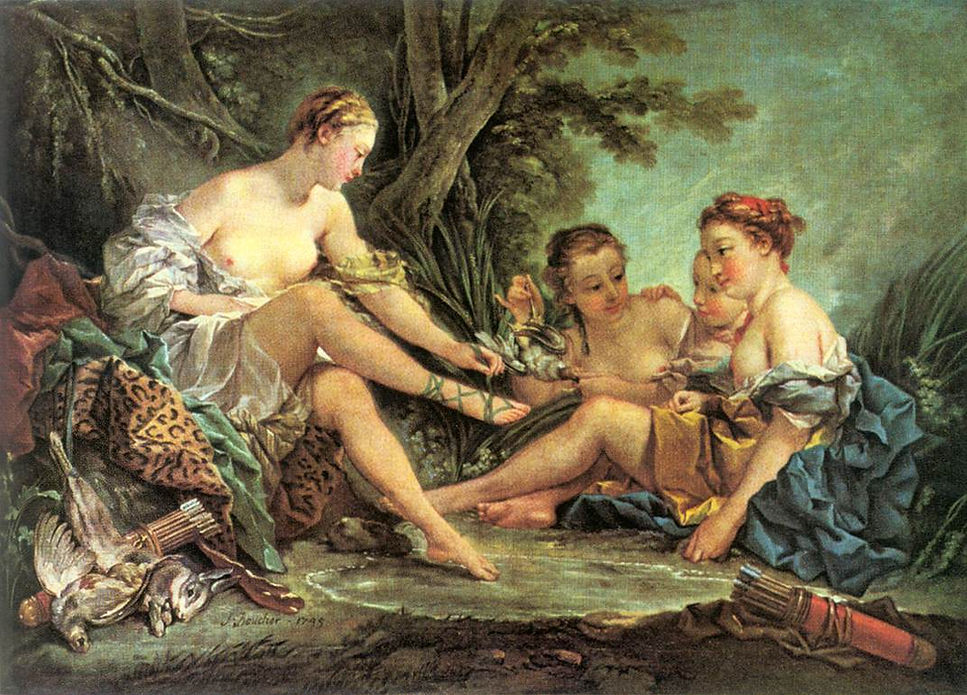
Diana after the Hunt

The Forest
1740

Are They Thinking About the Grape?
1747

Hercules and Omphale
1735

The Secret Message

Madame Boucher
1743

Cupid Disarmed
1751

The Rape of Europa
1732-34
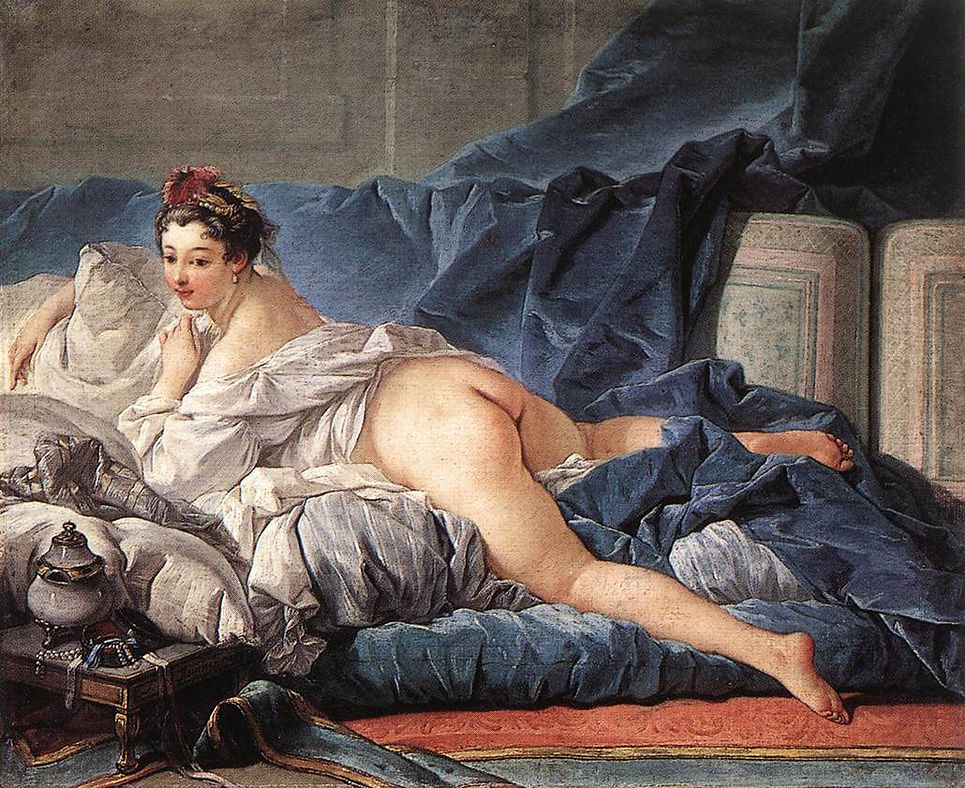
The Odalisk
1753
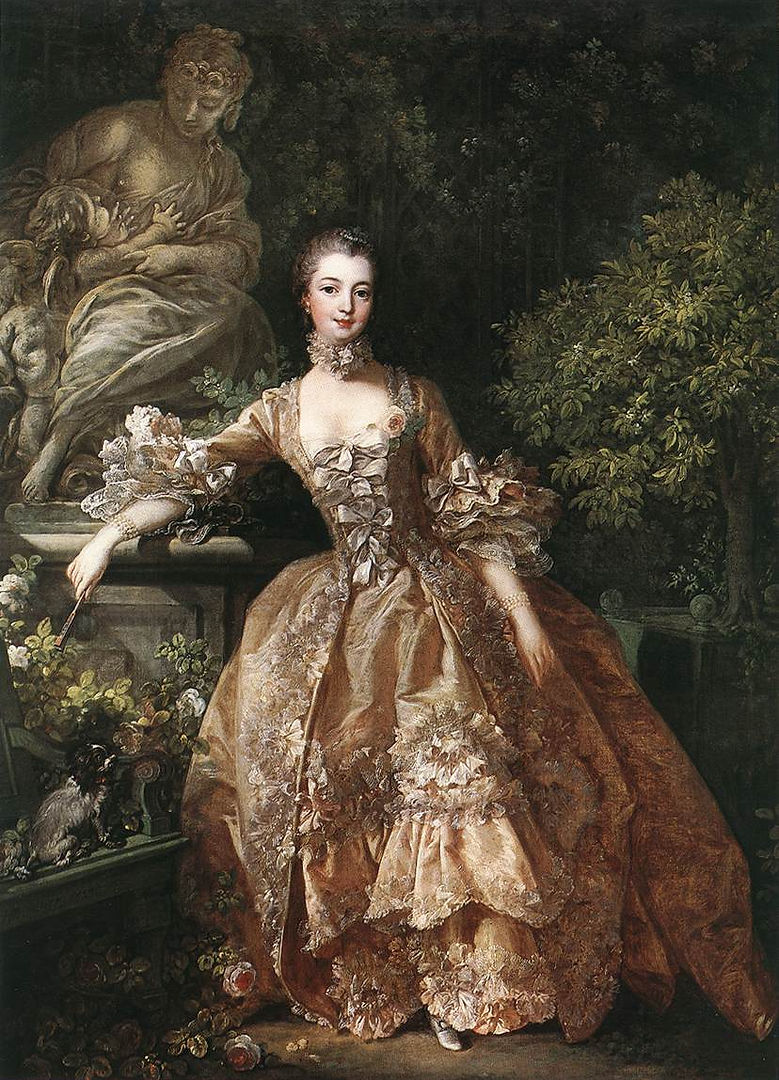
Portrait of Marquise de Pompadour
1759

Portrait of Marquise de Pompadour
1756

Marquise de Pompadour at the Toilet-Table
1758

Dreaming Shepherdess
c. 1763

Shepherd and Shepherdess Reposing
1761

Pan and Syrinx
c. 1762

Toilet of Venus
after 1743
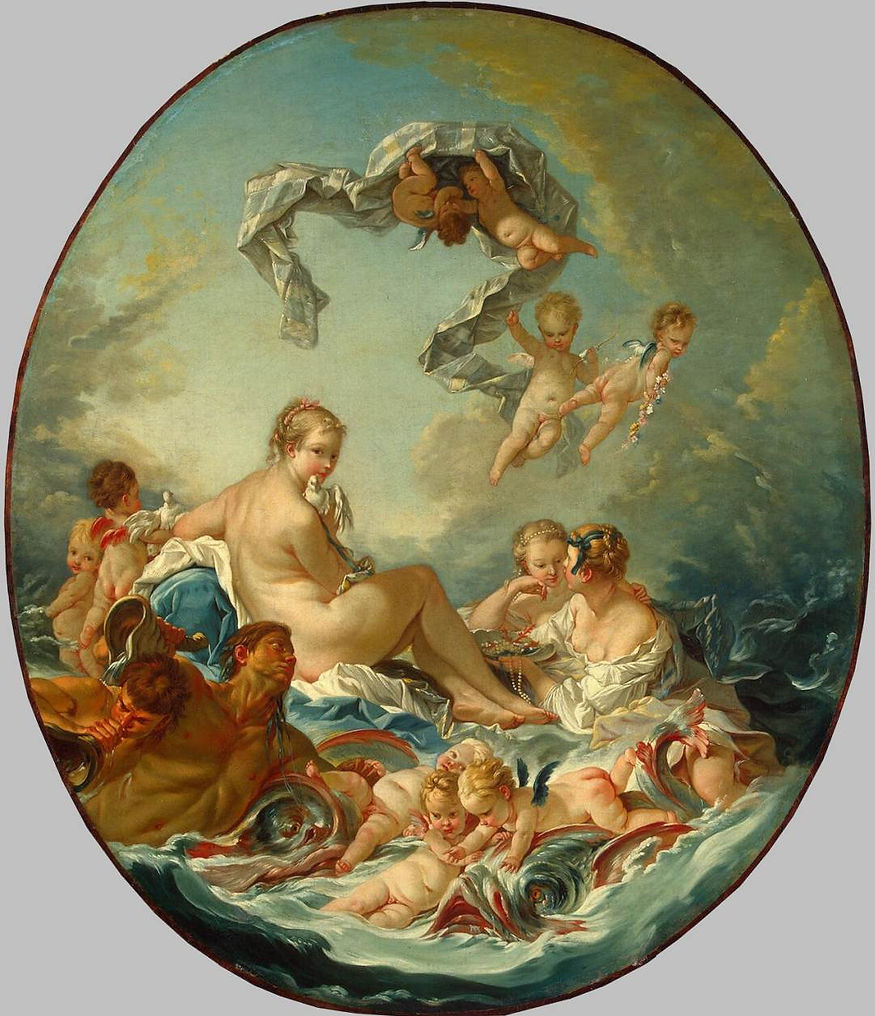
Triumph of Venus
after 1743

The Bath of Venus
1751

Jupiter and Callisto
1759

Leda and the Swan
1741

Venus Playing with Two Doves
1777
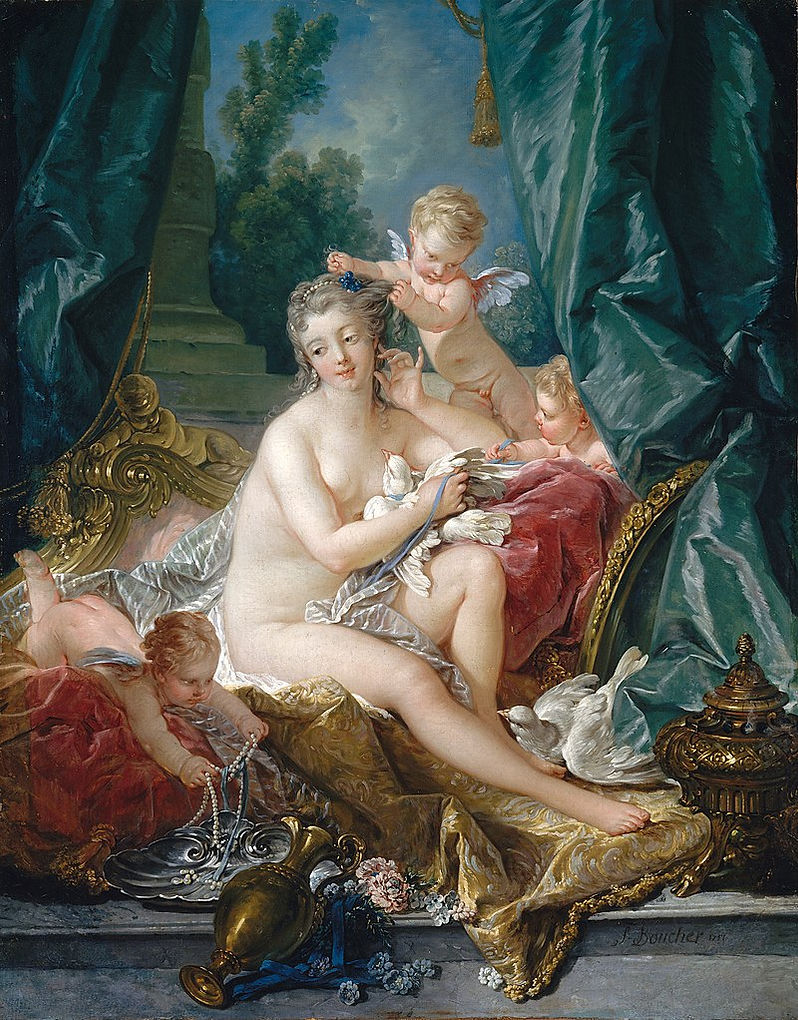
The Toilette of Venus
1751

Venus Disarming Cupid

Cupid Disarmed
1751

Pastoral scene

Venus in her Bath surrounded by Nymphs and Cupids

Venus and Amor

Sleeping Venus

The Raised Skirt

Danae
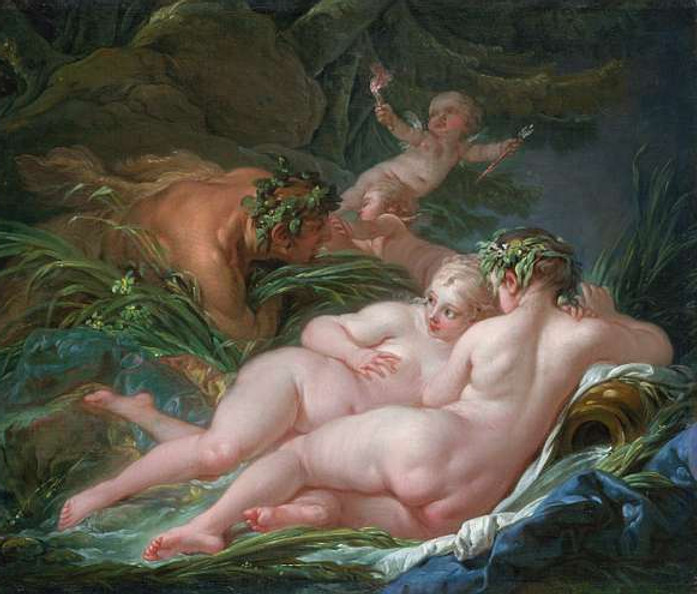
Pan and Syrinx
1759
Maurice Quentin de La Tour
1704 - 1788
Maurice Quentin de La Tour (5 September 1704 – 17 February 1788) was a French painter who worked primarily with pastels in the Rococo style. Among his most famous subjects were Voltaire, Rousseau, Louis XV and the Madame de Pompadour.
Maurice Quentin de La Tour was born in Saint-Quentin, the third son of a musician, François de La Tour. François was from Laon and he was the son of a master mason, Jean de La Tour, of Laon and Saint-Quentin, who died in 1674. François de La Tour apparently was successively a trumpet-player for the rifle regiment of the Duc du Maine, and musician to the master of the collegiate church of Saint-Quentin. He is popularly said to have disapproved of his son taking up the arts, but there is nothing to support this. According to François Marandet in 2002, an apprenticeship was arranged for the young Maurice, with a painter named Dupouch, from 12 October 1719, but it is not known when this contract was terminated. Little is known of de La Tour's background until, when barely nineteen, he went to Paris indefinitely, fleeing an indiscretion concerning his cousin, Anne Bougier; by this age he was claiming painting as his profession. After travelling briefly to England in 1725, he returned to Paris in 1727, where he was encouraged to begin working as a portraitist in pastels. His earliest known portrait, which is attested only by an engraving made in 1731 by Langlois, was a portrait of Voltaire.
In 1737, at the Paris Salon, de La Tour exhibited the portraits of Madame Boucher, the wife of the painter François Boucher, and l'Auteur qui rit or Self-Portrait, Laughing (musée du Louvre), the first of a series of 150 portraits that served as one of the glories of the Paris Salon for the next 36 years. Nevertheless, the painter Joseph Ducreux claimed to be his only student (although this is unlikely). On 25 May 1737, de La Tour was officially recognised (agréé) by the Royal Academy of Painting and Sculpture, and soon attracted the attention of the French court. According to Jeffares, he had an apartment in the Palais du Louvre in 1745. By the late 1760s, his portraiture of the royal family had ceased. De La Tour was popularly perceived as endowing his portrait subjects with a distinctive charm and intelligence, while his delicate but sure touch with the pastel medium rendered a pleasing softness to their features.
Contemporary accounts describe de La Tour's nature as lively, good-humoured, but eccentric. In many of his self-portraits he depicts himself smiling out from the frame towards the viewer; Laura Cumming states of de La Tour that "where other artists make heavy weather of portraying themselves, he takes the task lightly and seems to have produced more glad-faced self-portraits than any other artist". However, being of an excessively nervous disposition (which eventually descended into dementia), and an exacting practitioner, he has also been described as over-engineering his work, to the point of spoiling it.
As de La Tour's wealth increased from his commissions, so did his philanthropy: he founded a school for drawing in his native Saint-Quentin and donated towards impoverished women in confinement and disabled and ageing artisans and artists. He was also advisor and benefactor to the Royal Academy of Painting and Sculpture in Paris, and the Academy of Sciences and Belles Lettres of Amiens. Eventually confined to his home and to the care of his brother, Jean-François, because of encroaching mental illness, he retired at the age of 80 to Saint-Quentin, where he died intestate at the age of 83 (he had revoked earlier wills). Jean-François (d. 1807), chevalier de l'ordre royal militaire de Saint-Louis, was the natural heir to his estate.

Self-portrait

Voltaire

Marquise de Pompadour

Jean-Jacques Rousseau

Jean d'Alembert
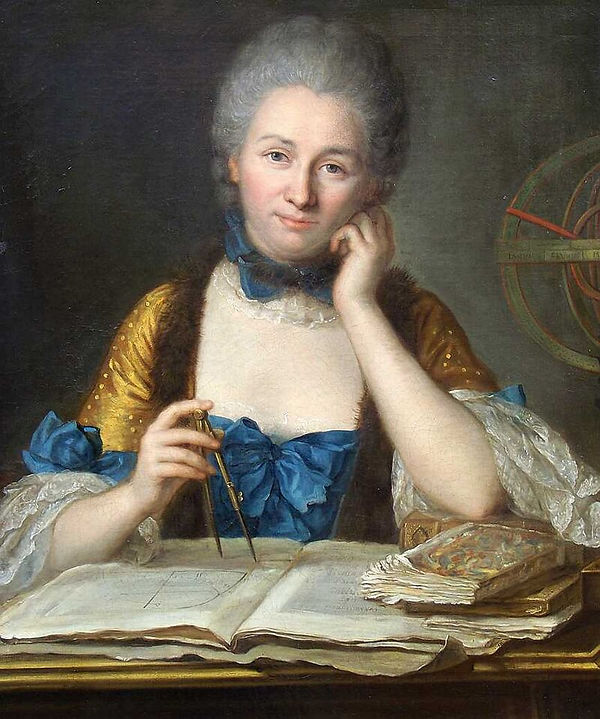
Émilie du Chatelet

Queen Marie Leszczyńska

Isabelle de Charrière
1766

Prince Henry Benedict Stuart

Charles Louis Auguste Fouquet

King Louis XV of France

Mlle Ferrand Meditating on Newton

Portrait of a Woman in a Rose-Colored Gown - La Dame en Rose

Portrait of Marie-Josèphe of Saxony, Dauphine of France

Portrait of a lady, bust-length, wearing a blue dress and holding a fan, seated on a Louis XV chair, said to be Madame Cailloux
Charles-Andre van Loo
1705 - 1765
Carle or Charles-André van Loo (French pronunciation: [ʃaʁl ɑ̃dʁe vɑ̃ lo]; 15 February 1705 – 15 July 1765) was a French painter, son of the painter Louis-Abraham van Loo, a younger brother of Jean-Baptiste van Loo and grandson of Jacob van Loo. He was the most famous member of a successful dynasty of painters of Dutch origin. His oeuvre includes every category: religion, history painting, mythology, portraiture, allegory, and genre scenes.
He was born in Nice, then part of the Duchy of Savoy. Van Loo followed his brother Jean-Baptiste to Turin, and then to Rome in 1712, where he studied under Benedetto Luti and the sculptor Pierre Le Gros. After leaving Italy in 1723, he worked in Paris, studied at the Académie Royale, where he gained first prize for drawing in 1723, and received the first prize for historical painting in 1727—as did his future rival François Boucher. In 1724 he won the Prix de Rome.
After again visiting Turin in 1727, he was employed by king Victor Amadeus II of Sardinia, for whom he painted a series of subjects illustrative of Torquato Tasso. In 1734 he settled in Paris, and in 1735 became a member of the Académie royale de peinture et de sculpture and rose rapidly in the hierarchy of the academy. Madame de Pompadour and the French court were taking the artist under their patronage. He was decorated with the Order of Saint Michael and named First Painter to king Louis XV of France in 1762. He was a most successful court painter but his portraits as well as history paintings also enjoyed an enormous success throughout all Europe. He died in Paris on 15 July 1765.

Self-portrait of Charles-André van Loo

The Virgin
1738

Painting
1752-1753

Architecture
1752-1753

Sculpture
1752-1753

Music
1752-1753

Portrait of Innocente Guillemette de Rosnyvinen de Pire
1762

Perseus and Andromeda

Marie Leczinska, Queen of France (1703-1768)
1747

La Marquise de Pompadour
1754-1755

The Three Graces
1763

Bacchus and Ariadne

Spanish Conversation
1754

Allegory of comedy
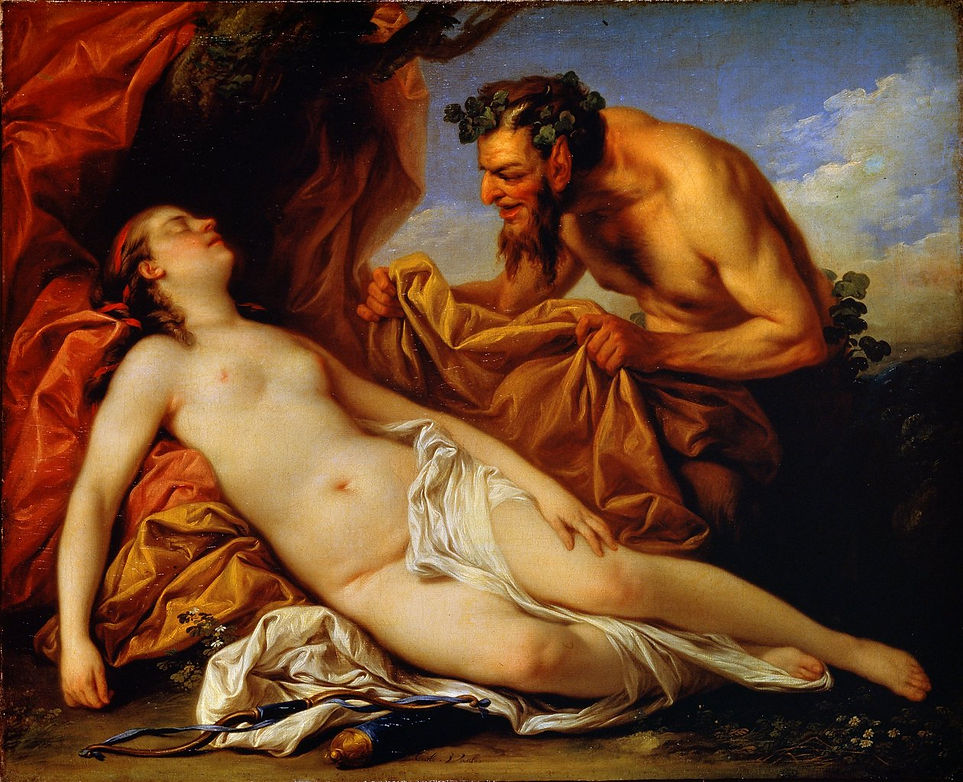
Jupiter and Antiope
c1753

Silene's drunk

Venus and Cupids with the Arms of Mars
c.1743
Pompeo Batoni
1708 - 1787
Pompeo Girolamo Batoni (25 January 1708 – 4 February 1787) was an Italian painter who displayed a solid technical knowledge in his portrait work and in his numerous allegorical and mythological pictures. The high number of foreign visitors travelling throughout Italy and reaching Rome during their "Grand Tour" led the artist to specialize in portraits.
Batoni won international fame largely thanks to his customers, mostly British of noble origin, whom he portrayed, often with famous Italian landscapes in the background. Such Grand Tour portraits by Batoni were in British private collections, thus ensuring the genre's popularity in Great Britain. One generation later, Sir Joshua Reynolds would take up this tradition and become the leading English portrait painter. Although Batoni was considered the best Italian painter of his time, contemporary chronicles mention his rivalry with Anton Raphael Mengs.
In addition to art-loving nobility, Batoni's subjects included the kings and queens of Poland, Portugal, and Prussia; the Holy Roman Emperors Joseph II and Leopold II (a fact which earned him noble dignity); the popes Benedict XIV, Clement XIII, and Pius VI, Elector Karl Theodor of Bavaria; and many more. He also received numerous commissions for altarpieces for churches (in Rome, Brescia, Lucca and Parma, for example) as well as for mythological and allegorical subjects.
Batoni's style took inspiration and incorporated elements of classical antiquity, French Rococo, Bolognese classicism, and the work of artists such as Nicolas Poussin, Claude Lorrain, and especially Raphael. As such, Pompeo Batoni is considered a precursor of Neoclassicism.
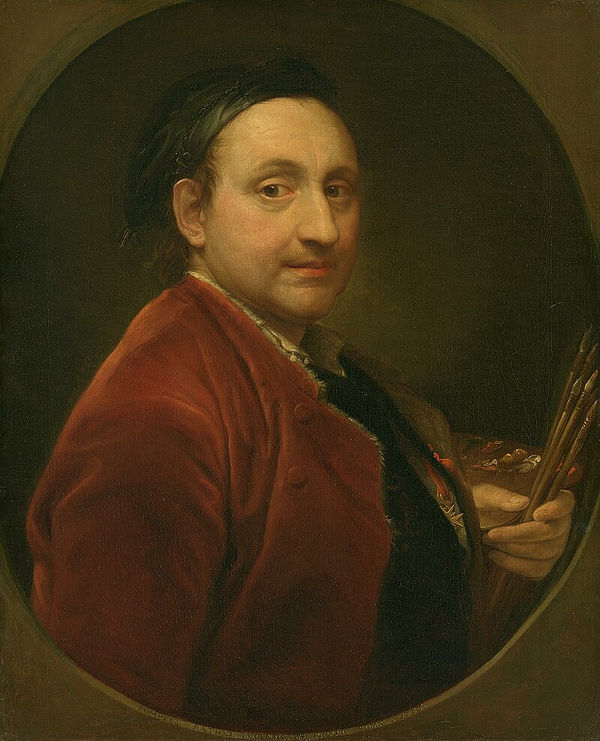
Self portrait
1765.

John Talbot, later 1st Earl Talbot
1773

William Fermor
1758

Portrait of Maria Anna of Austria, Queen of Portugal

Portrait of John V, King of Portugal, aged about 17

Thomas Taylour, 1st Marquess of Headfort
1782

Portrait of Richard Milles
1758

Allegory of the Arts
1740
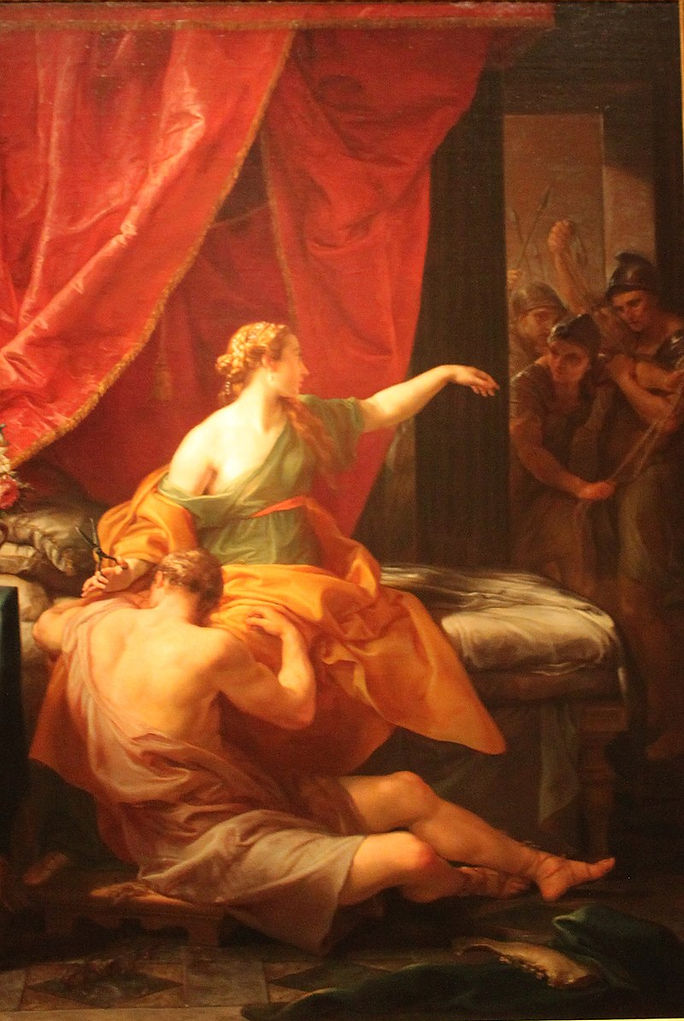
Samson and Delilah
1766

The Holy Family with St Elizabeth and the Infant St John the Baptist
1777

The Sacred Family
ca. 1763

Apollo and two Muses
1741
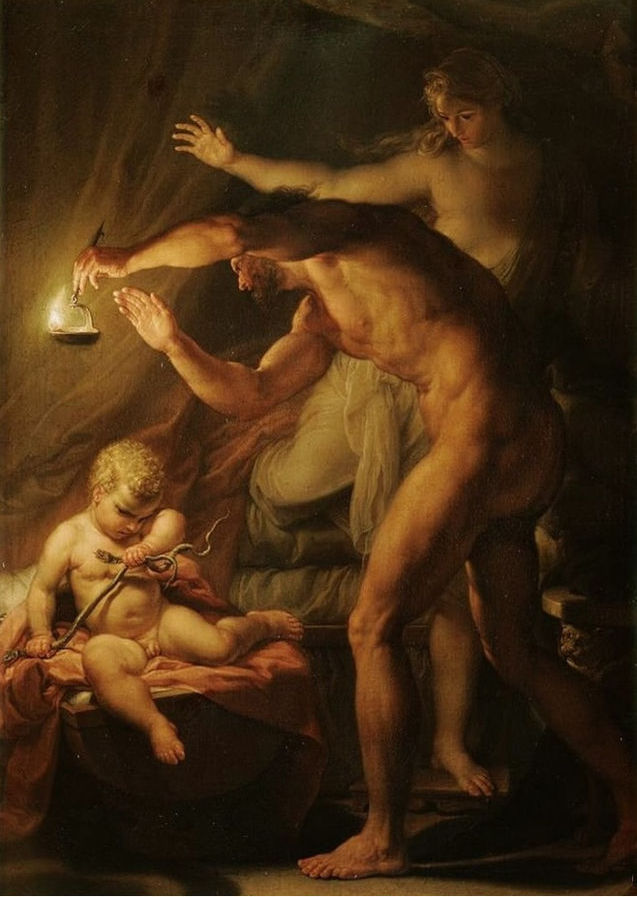
The infant Hercules strangling serpents in his cradle
1743

Marriage of Cupid and Psyche
1756
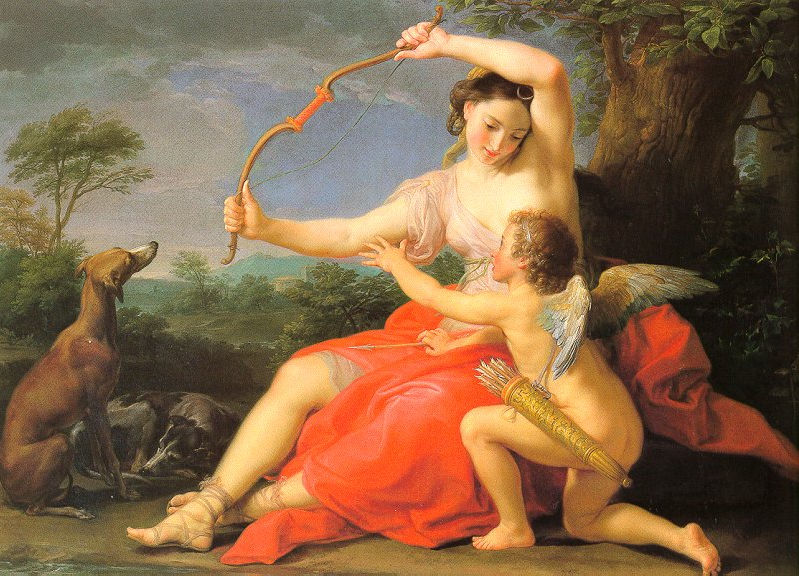
Diana and Cupid
1761
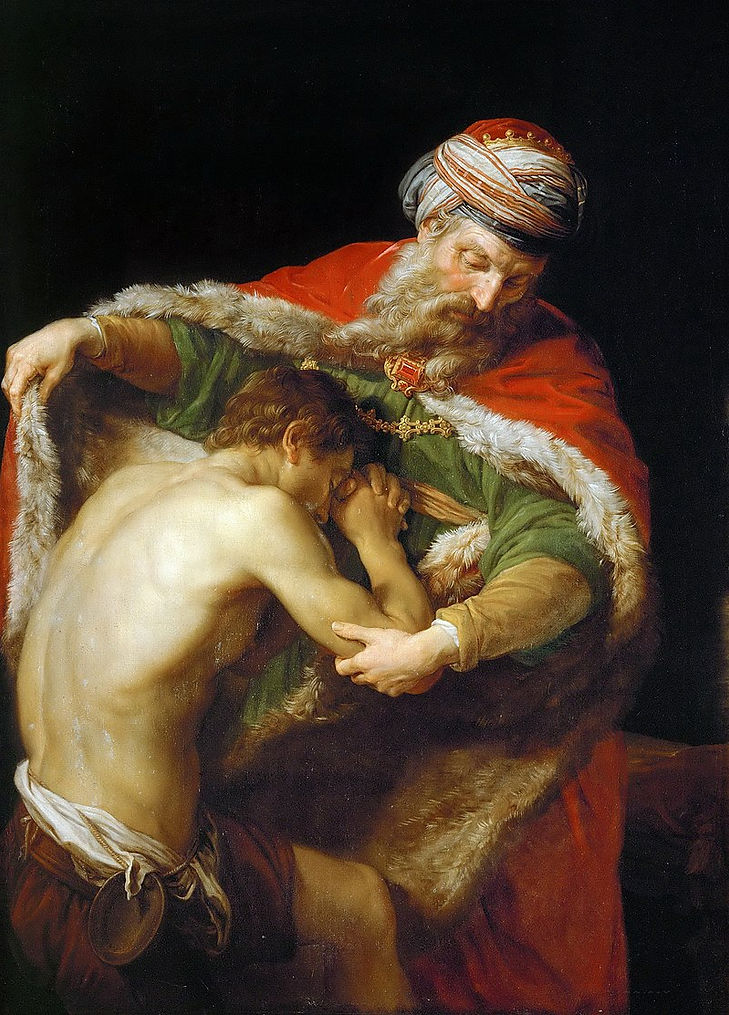
The Return of the Prodigal Son
1773

Achilles and the Centaur Chiron
1746

Portrait of Princess Giacinta Orsini Buoncampagni Ludovisi
c. 1758

Madonna and Child
c. 1742

Sensuality
1747

Susanna and the Elders
1751
Joshua Reynolds
1723 - 1792
Sir Joshua Reynolds(16 July 1723 – 23 February 1792) was an English painter who specialised in portraits. John Russell said he was one of the major European painters of the 18th century. He promoted the "Grand Style" in painting, which depended on idealisation of the imperfect. He was a founder and first president of the Royal Academy of Arts and was knighted by George III in 1769.
Old Grammar School, Plympton, founded 1658, built 1664, attended by Joshua Reynolds whose father was headmaster
Reynolds was born in Plympton, Devon, on 16 July 1723, as the third son of the Reverend Samuel Reynolds (1681–1745), master of the Plympton Free Grammar School in the town. His father had been a fellow of Balliol College, Oxford, but did not send any of his sons to the university. One of his sisters, seven years his senior, was Mary Palmer (1716–1794), author of Devonshire Dialogue, whose fondness for drawing is said to have had much influence on Joshua as a boy. In 1740, she provided £60, half of the premium paid to Thomas Hudson the portrait-painter, for Joshua's pupillage, and nine years later advanced money for his expenses in Italy. His other siblings included Frances Reynolds (1729–1807) and Elizabeth Johnson (1721–1800).
As a boy, he also came under the influence of Zachariah Mudge, whose Platonistic philosophy stayed with him all his life. Reynolds made extracts in his commonplace book from Theophrastus, Plutarch, Seneca, Marcus Antonius, Ovid, William Shakespeare, John Milton, Alexander Pope, John Dryden, Joseph Addison, Richard Steele, and Aphra Behn and copied passages on art theory by Leonardo da Vinci, Charles Alphonse Du Fresnoy, and André Félibien. The work that came to have the most influence on Reynolds was Jonathan Richardson's An Essay on the Theory of Painting (1715). Reynolds' annotated copy was lost for nearly two hundred years until it appeared in a Cambridge bookshop, inscribed with the signature "J. Reynolds Pictor". It is now in the collection of the Royal Academy of Arts, London.

Self-portrait, aged about 24

General Sir Banastre Tarleton
1782

Lady Cockburn and her Three Eldest Sons
1773

Lady Elizabeth Delmé and her Children
1777-80

George Clive and his Family with an Indian Maid
1765

Mrs. Musters as Hebe
1785
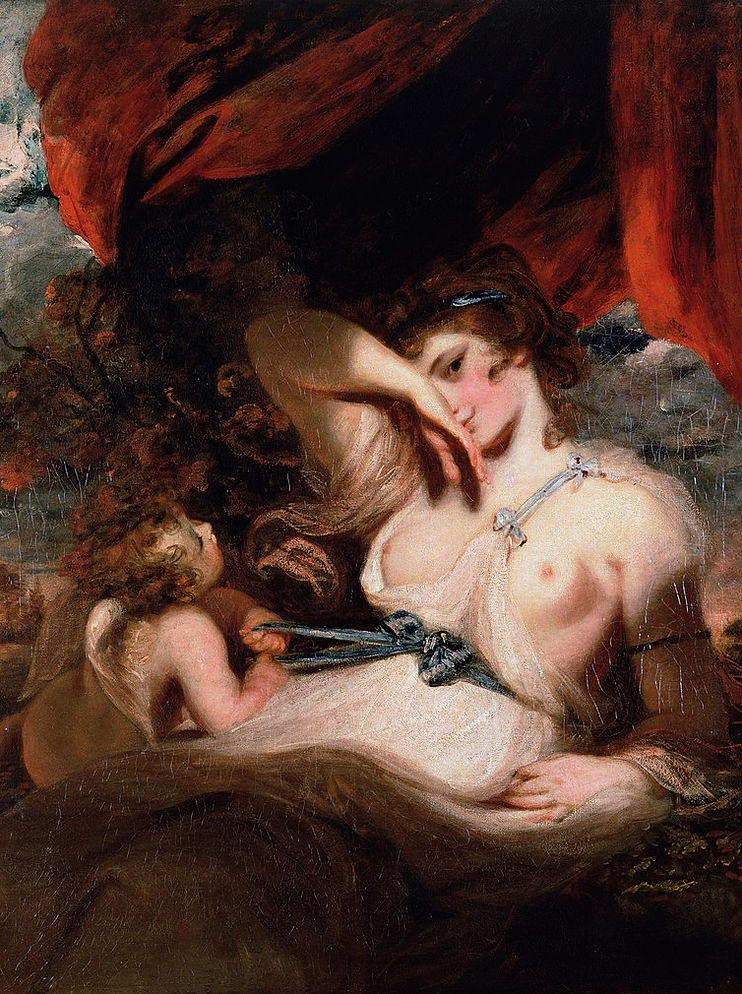
Cupid Untying the Zone of Venus
1788

The Cottagers
1788

The Age of Innocence
c. 1788

The Ladies Waldegrave
1780

Colonel Acland and Lord Sydney, The Archers
1769

Sarah Campbell
1777

Lady Caroline Howard
1778

Jane, Countess of Harrington
1778
